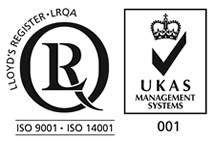
Main Products
Copyright 1998-2025 Firmetal Group All Rights Reserved. | Sitemap
Traditionally, tantalum has been very difficult and costly to manufacture by traditional methods such as mechanical processing and forging due to its extremely high melting point (3017°C), active chemical properties at high temperatures, and relatively brittle texture. 3D printing, especially powder bed fusion technology, offers a perfect solution to these problems:
Overcoming manufacturing challenges: Directly forming from powder, avoiding the difficulties brought by traditional processing.
Achieve complex structures: It is possible to manufacture complex geometric shapes, internal cavities and grid structures that cannot be achieved by traditional processes.
Customized production: Particularly suitable for the medical field, it tailors implants for patients.
High material utilization rate: Unmelted powder can be recycled and reused, reducing the waste of expensive materials.
Electron Beam Melting (EBM)
Principle: In a high vacuum environment, an electron beam is used as the heat source to selectively melt a layer of metal powder.
Advantage: The vacuum environment is highly suitable for printing tantalum, a refractory metal that is extremely prone to oxidation. The electron beam has high energy and a good preheating effect on powder, which can reduce residual stress.